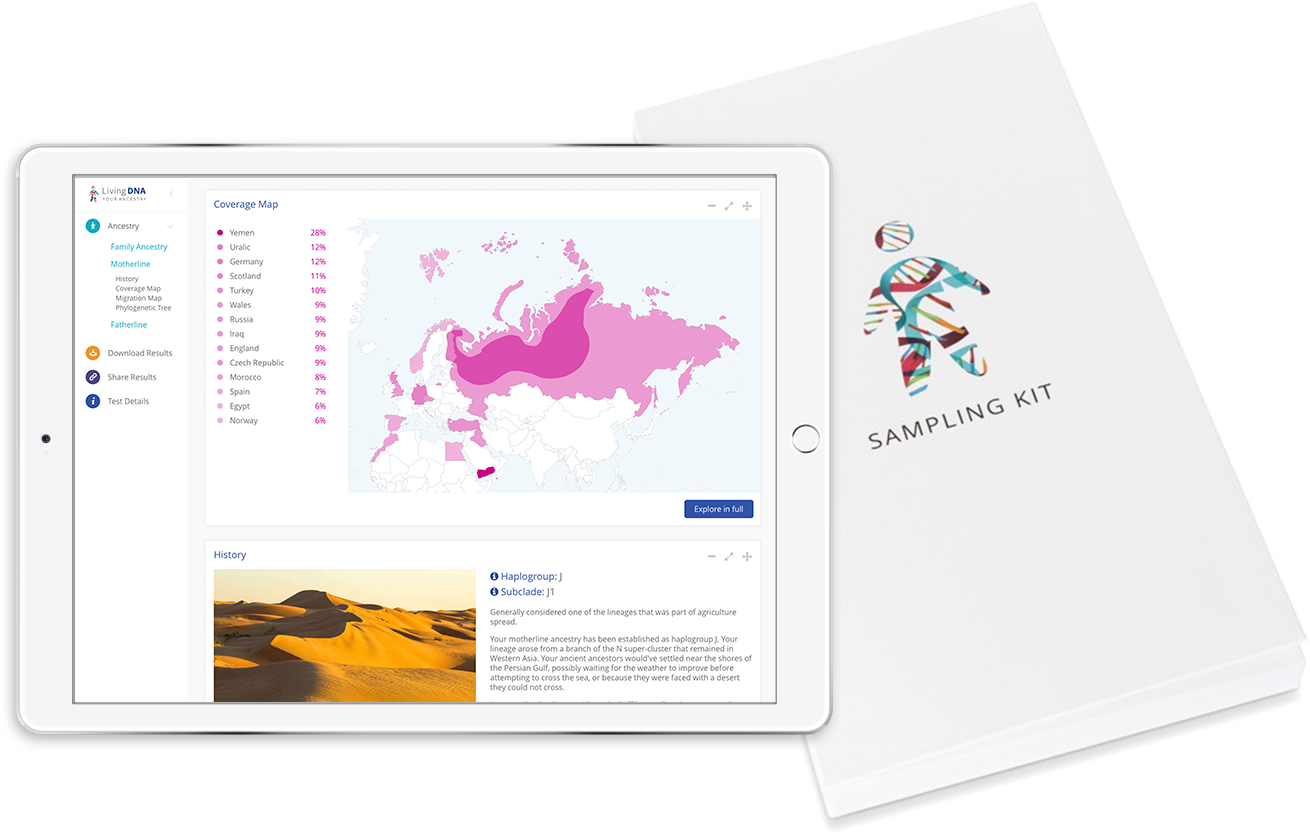Imagine being able to find out information about your ancestors from tens of thousands of years ago. This might seem like stuff from a science fiction movie, but it is in fact entirely possible, and all without a time machine.
Ok, so you can't find out names or details on an individual level, but what you can find out is which deep ancestral groups you belong too, and consequently information about your ancestor's geographical distribution and migration roots out of Africa.
Our ability to discover so much about our past is pretty incredible, especially when you consider that DNA was only discovered in the 1950s. These deep ancestral groups are known as haplogroups, and understanding them can be a little tricky. Here's a simple guide to help you make sense of it all.
What are Haplogroups?
Haplogroups relate to our deep ancestry. This is not ancestry in the traditional sense, such as searching for family connections over the last few centuries, but instead involves looking at our ancient roots from tens of thousands of years ago.
Y-Chromosomal Adam and Mitochondrial Eve
All living people today share a common female ancestor, who lived in Africa an estimated 200,000 years ago. All men also share a common male ancestor,
who is argued to have lived roughly around the same time period. They are known as 'Y-Chromosomal Adam' and 'Mitochondrial Eve'. This doesn't mean that at the time these were the only people in the world, but rather that their genetic lines are now the last surviving.
The Human Genetic Tree
The phylogenetic tree represents the evolutionary relationship of species believed to have a common ancestor. Humans represent one branch of this tree, which was built based on DNA and particularly SNP markers, which are small changes or mutations in the DNA that occur naturally over time.
Y-DNA (paternal line) and mtDNA (maternal line) each have their own branches on the human genetic tree. 'Y-Chromosomal Adam' and 'Mitochondrial Eve' are our most recent common ancestors and so appear at the top of the trees, which then filter down to show the genetic groups (haplogroups) that are descended from them.
The Y-DNA tree has approximately 18 branches, known as 'Y-DNA Haplogroups', which are classified by the letters A to R. Each haplogroup also has numerous further sub groups, which are classified by numbers and letters such as R1A.
The mtDNA tree has around 26 main branches, known as mtDNA haplogroups, which are classified by letters A-Z. As with the paternal line, each mtDNA haplogroup has further sub clades, which are represented by letters and numbers. Every single person in the world today is descended from one of the main mtDNA haplogroups.
The Root of it All
The basic upshot of all of this is that haplogroups show us where we fit into the human genetic tree and groups us into ancient family 'clans'. Each one is the result of genetic mutations known as SNPs, and people descended from the same 'clan' will have the same pattern of SNPs. Once you have identified your haplogroup, further testing can identify your sub-group.
What Can They Tell Us About Our Ancestry?
Identifying your haplogroup can tell you a surprising amount about your deep ancestry. They are generally associated with particular geographic regions and can tell us about our ancestor's migration routes out of Africa, as well as linking you to a group of people who share ancient ancestors.
Migration Routes
Extensive research means that we can now link each haplogroup to man's migration routes, as we spread out and populated the Earth. This is an area of ongoing research and subject to change, but examples include:
Y-DNA Haplogroups
- Y- DNA Haplogroup H is a branch of the mega-Haplogroup F, and is believed by scientists to have originated roughly 30,000 years ago in Eastern Africa before spreading to the Indian subcontinent. It is now found in high frequencies in India and Sri Lanka, as well as the Roma populations of Europe.
- Y-DNA Haplogroup I is also a branch of the mega-Haplogroup F and originated around 25,000 years ago in Eastern Africa and Southern Europe. After the last Ice Age, it spread into Northern Europe.
MtDNA Haplogroups
- MtDNA Haplogroup H is one of the most dominant groups in Europe. It most likely originated in areas where most of the European genetic lineages are believed to have emerged, such as the Caucasus, the Near and the Middle East.
- MtDNA Haplogroup X originally diverged from Haplogroup N, and around 20-30,000 years ago, diverged again to form two further sub-groups, X1 and X2. X1 is less numerous and predominantly occurs in North and East Africa and the Near East. X2 is more common, occurring strongly in Near East, the Caucasus, Mediterranean Europe and somewhat through the rest of Europe.
What You'll Receive
When you receive your deep ancestry test results, we'll send you a wealth of information based on your paternal or maternal Haplotype:
- You'll receive a detailed personalised booklet, covering the history and migration roots of your deep ancestors.
- A detailed map showing you how often your deep ancestry group is found in different parts of Europe.
- A visual map showing the frequency of your deep ancestry group in the counties of Britain.
- A report showing you a breakdown of your group across England, Ireland, Scotland and Wales.
- A diagram showing your position on the phylogenetic tree.
- Your unique genetic signature, if you undergo male ancestry testing.
The extensive research into paternal and maternal Haplogroups means that they can now tell us a surprising amount about our deep ancestry. Being able to find out where your ancestors originated from and travelled to, tens of thousands of years ago, is hugely fascinating and an incredible journey of personal discovery.
It can connect you with people in Britain and all around the world who share ancient ancestors with you, and help you understand your place in a story stretching back to the beginnings of human kind. With continual research occurring in this area, learning your Haplogroup could provide you with more discoveries in the years to come.
Would you be interested in learning about your ancient ancestors? Let us know in the comments.
Image by
Wikimedia



.jpg)

.jpg)

